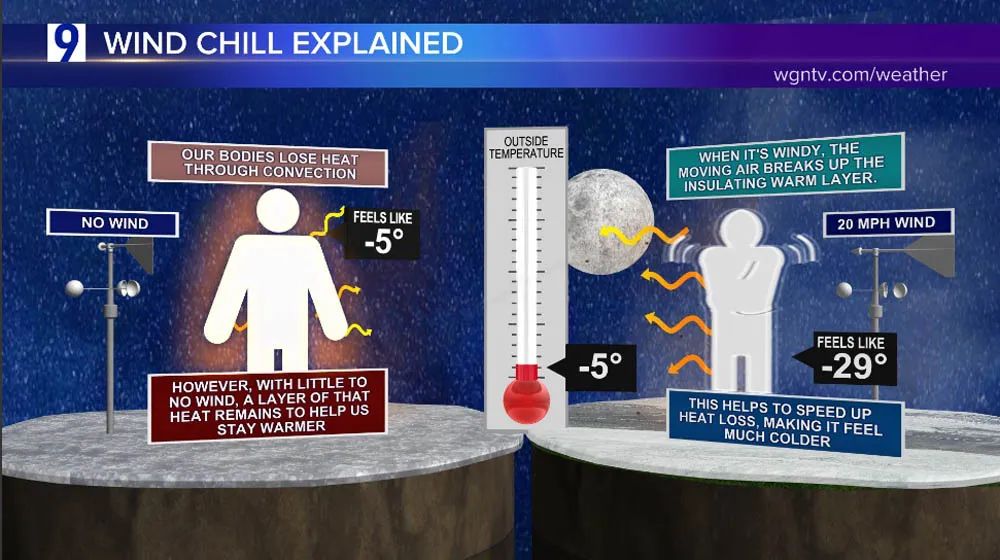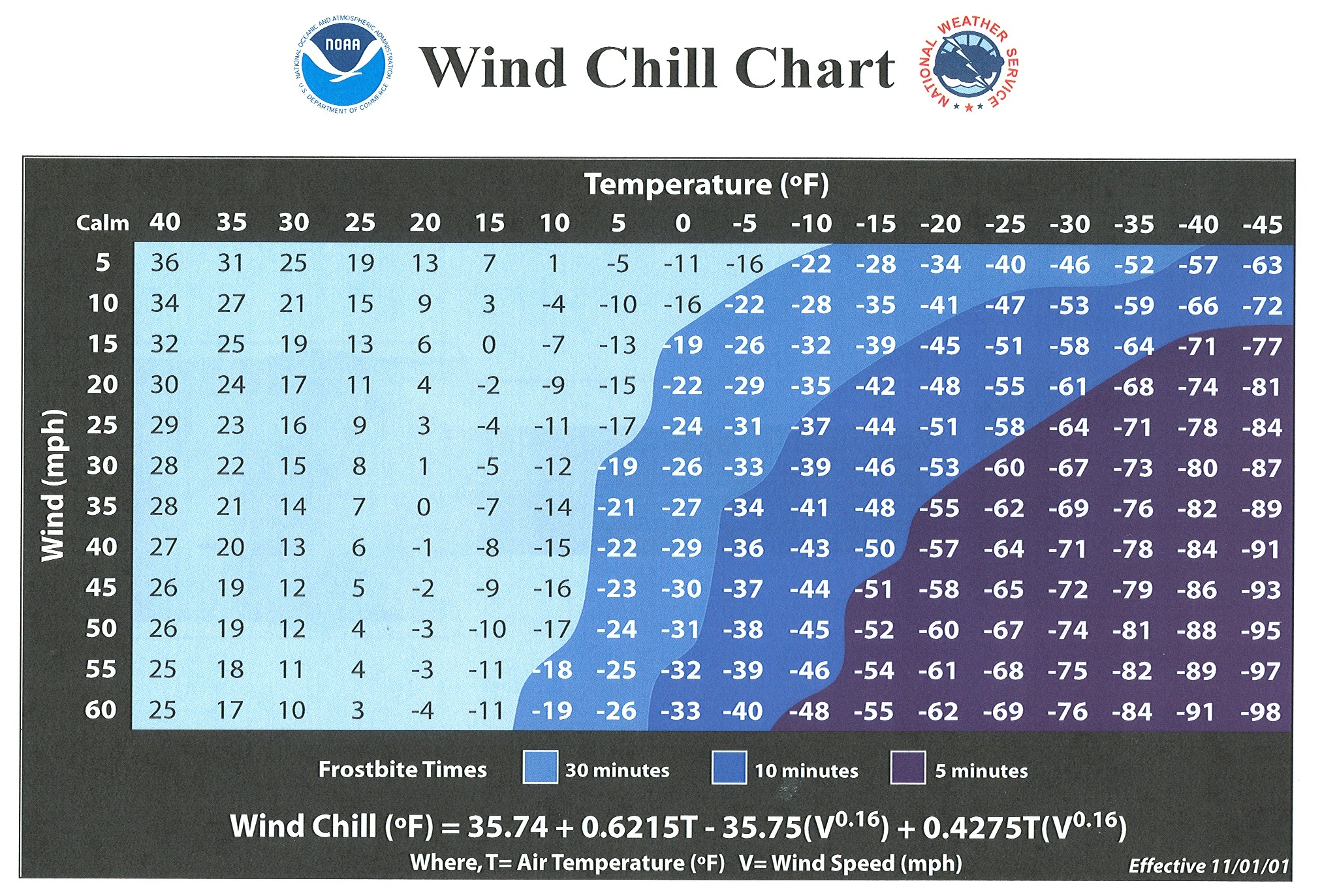Wind Chill Explained
Sources: Wikipedia and WGN Weather Blog
Wind chill or windchill (popularly wind chill factor) is the lowering of body temperature due to the passing flow of lower-temperature air. Windchill temperature is defined only for temperatures at or below 10 °C (50 °F) and wind speeds above 4.8 km/h (3.0 mph).When the apparent temperature is higher than the air temperature, the heat index is used instead.

A surface loses heat through conduction, evaporation, convection, and radiation. The rate of convection depends on both the difference in temperature between the surface and the fluid surrounding it and the velocity of that fluid with respect to the surface. As convection from a warm surface heats the air around it, an insulating boundary layer of warm air forms against the surface. Moving air disrupts this boundary layer, or epiclimate, allowing for cooler air to replace the warm air against the surface. The faster the wind speed, the more readily the surface cools.
As the air temperature falls, the chilling effect of any wind that is present increases. For example, a 16 km/h (10 mph) wind will lower the apparent temperature by a wider margin at an air temperature of -20 °C (-4 °F) than a wind of the same speed would if the air temperature were -10 °C (14 °F).
Please refer to the Wikipadia page sourced above or the graphic below for the mathematical formula. An online calculator can be found HERE.





